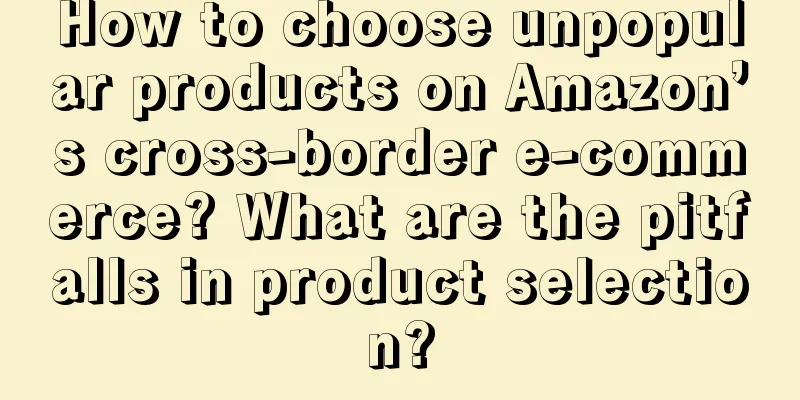How to choose unpopular products on Amazon’s cross-border e-commerce?
1. To choose the industry to enter, you must first understand which resources can be integrated.
2. Be familiar with using various research tools, such as the following four Amazon product selection research tools, to integrate the platform's big data resources to help novice sellers select products better and faster.
3. Consider whether there is a complete industrial chain in your area. Starting from your surroundings is the best option. Convenient resource integration, cost saving and profit maximization
4. Product selection determines sales strategy. Whether it is a niche product, a product with a certain threshold, or a hot-selling mass product, the positioning must be clear.
5. Communicate more with overseas buyers, grasp fashion trends, and maintain good product sensitivity.
6. When acting as an agent for domestic products or choosing to cooperate with foreign OEM factories, you need to have a long-term vision.
7. Cooperate with factories and conduct in-depth research and development, this path is more sustainable. Remember to choose a high-quality and reputable factory to cooperate with.
What are the pitfalls of Amazon product selection?
1. Blindly follow the trend and choose hot-selling products on the platform: such as Bluetooth headsets and mobile power banks. It is not impossible to do this, but for new and small sellers, the competitive incentive pressure is high and there are too many uncontrollable factors.
2. Being lazy and looking for ease, putting the products on the shelves on the consignment website with one click: This situation is very common in the FBM model without source of goods in the mainland. It is very busy and tiring but difficult to make money.
3. Lack of market analysis and competitive product research, "relying solely on personal preference" and being stubborn: Due to the differences in preferences, aesthetics, cultural barriers, and application scenarios between China and the West, these are insurmountable gaps, which often lead to product selection failures
4. Blindly pursue high quality: Although Amazon customers have relatively high requirements for product quality, if sellers blindly pursue high quality, it means high costs, and high costs mean high prices, and high prices mean no advantages and no sales.
5. Blind pursuit of differentiation: It is easy to lead to long operating cycles and increased risks. For example, differences in functions lead to increased costs, exclusive private models lead to high costs, slow progress, and unstable quality, quantity differentiation leads to higher costs, and matching differentiation and packaging differentiation also lead to higher costs, etc.
This is the end of this issue's introduction to Amazon's cross-border e-commerce unpopular product selection. If you want to get more information about Amazon's cross-border e-commerce unpopular product selection, please pay attention and we will continue to answer you~

